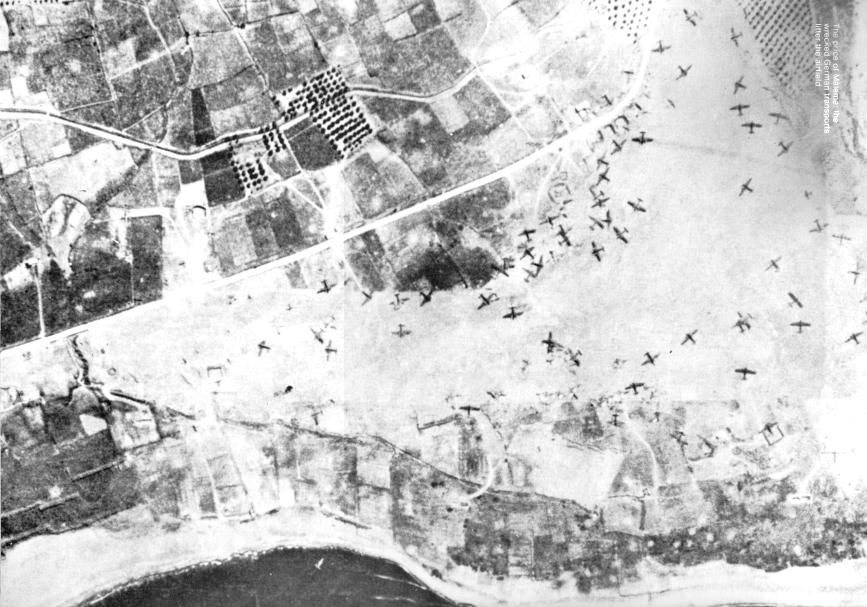


It highlights the final act of the German-Greek war. Because of the occupation of Crete (Kriti) was considered an unrealistic military objective, no significant defense preparations had been made of the island. Hitler himself could not see the expediency of the operation hesitated to undertake an air attack on Crete, the only viable way to achieving its occupation. Kurt Student, commander of XI Air Corps, managed to change Hitler's mind, while the majority of the German military leaders had opted for an attack on Malta, not on Crete. Students argued that the occupation of Crete - Kreta - Kriti would be an easy and glorious operation that would strengthen German air superiority in the Mediterranian and, at the same time, provide other military benefits. Thus, began Operation Mercure on the morning of May 20, 1941. It was the largest in scale operation of the troop's air transport during the Second World War.

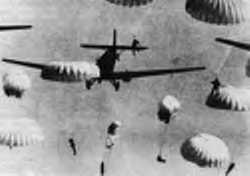

The Cretan Sky was filled with thousands of German invaders, the finest of German parachutists. In the evening of the same day, Parachutists dropped on Rethymnon and Heraklion, their objective was to occupy the local airports and Sea - Ports. From the Greek side, the war-ready V Division was cut off in mainland Greece. The defense forces on the island consisted of British Commonwealth troops and eight, poorly trained and equipped battalions of Greek recruits which had been transported from Nafplion and Tripolis. The most effective force on the island was the gendarmerie and the first class of the Military academy, albeit insufficiently equipped. Add to this the common folk who although unarmed, put up a fierce resistance against the new invaders. The situation on the island was described in the following manner by the Minister of the Interior at that time, Mr. Stelios Dmitrakakis, of the Tsouderos government.
No significant defense works had been set up on the island on Crete, in spite of the fact that British forces had landed on the island since November 1940. The British commander changed every so often and there were no sufficient British forces on the island. Since the beginning of the war, Cretan youth had been fighting on the Albanian mountains. What is more, the previous government had demanded the disarmament of the locals. It was common knowledge that each Cretan kept a rifle at home. It was an old Cretan tradition. The Cretans revolted each time the conquerors imposed impossible measures. This reflected the prospect of the relative freedom that slaves occasionally impose on their masters. A tradition very much alive today. The Cretans gladly surrendered their arms to the poorly equipped Greek Army.

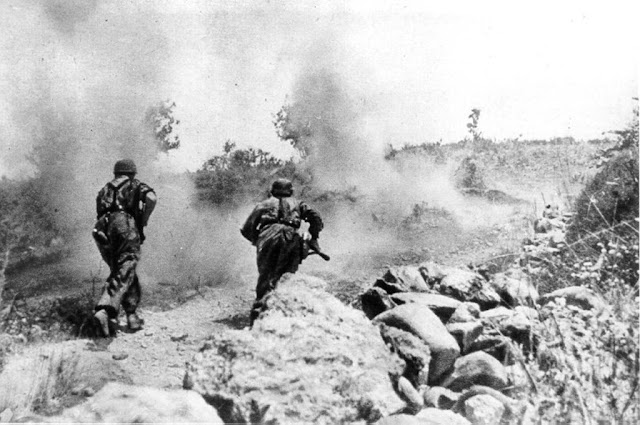
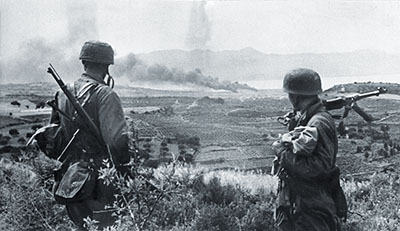
In April 1941, Crete was almost unarmed. Last-minute reinforcements came from Peloponnese: 8 battalions of poorly trained Greek recruits armed with riffles but not with sufficient ammunition. Of course, after the fall of Greece, 27000 - 28000 British soldiers arrive
The Cretans often take up arms, mainly obsolete and of historical value only, to engage in flights of dubious or questionable effectiveness. Here, one can not help but wonder wh d on the island, most of them were exhausted after fierce and heroic resistance in mainland Greece. Unfortunately, time had not been exploited properly and the prospects both for Geeks and British were rather bleak.
y the Cretans had been left unarmed. If this had not been the case, the Cretans could have formed a civil guard who would have participated in the battle in a more effective and dynamic way. The above run contrary to Germans intelligence which took for granted that the attitude of Cretans towards the Germans would have been neutral, if not friendly. Perhaps this misleading information was disseminated by the British secrete service.

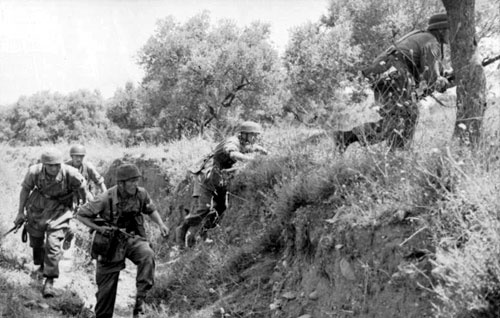

Firstly: it was the first battle to be won exclusively by airforces.
Secondly: the commander of the allied forces, General Freyberg had at his disposal a unique and valuable source of information about the enemy: the ULTRA system, which made possible the decoding of wireless telecommunications concerning Operation Mercury. German telegrams were ciphered by a device called ENIGMA. A copy of this device had been made available to the British by the Polish allies.
Thus on May 6, the British knew not only of the date but also of the exact time the air attack on the island was going to take place.
Thirdly: nowhere else within the European and African war theatres did the Nazi troops meet civilian resistance as in Crete. What is more, resistance continued even during occupation until the forces of the axis were finally and completely overwhelmed. Apart from the stones, all else rose against us in Crete. All living things fought to the last moment, giving this Battle its most paradoxical and glorious nature in the history of Battles......... a German officer noted later.


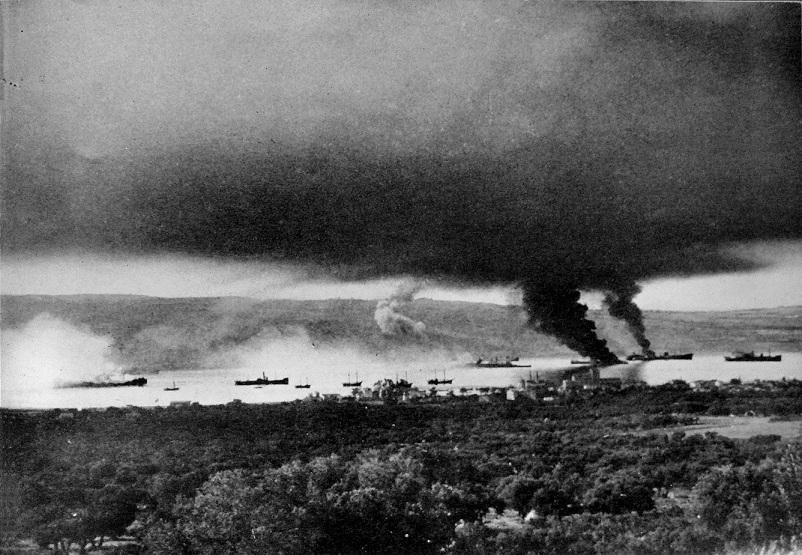
The British historian Alan Clark, referring to the resistance of the Cretans noted: How different the route of history would have been if a year earlier the people of the West had exhibited the same fortitude when their villages were being invaded in the same way by the Germans....
During the Battle of Crete, the German's formidable and invincible weapon, the
parachutists, the spearhead of the Nazi forces, was completely annihilated. Most of the first wave of paratroopers was annihilated within minutes following their drop. A large number of planes were shot down or crash-landed after serious anti-aircraft damage. The German forces perished on Crete could have been deployed for the occupation of Cyprus, Iraq, Syria, and possibly of Persia.
The parachutists suffered a devastating blow from which they never recovered. In addition, they
lost their status as a surprise attack weapon. Even the architect and instigator of this operation, General Student, was obliged to admit: I confess that I recommended this attack based on miscalculations. Unfortunately, Crete succumbed under the weight of a more modern and terrifying German military machine. By the end of the sweep-up operations on May 29, 1941, the swastika waved all over the island. Unarmed Crete was finally occupied.

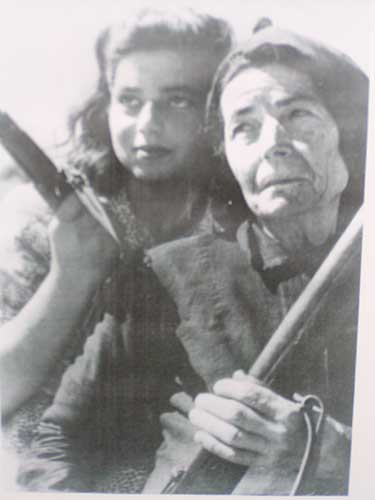
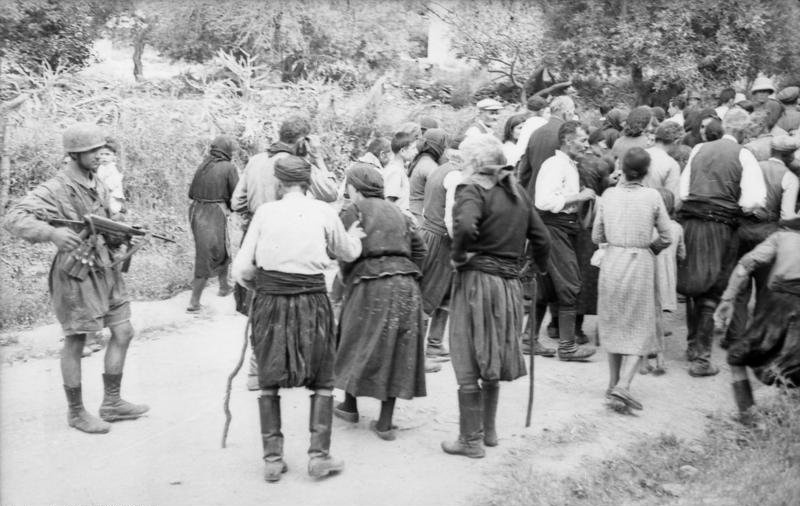
The whole World was Witnessed in awe and admiration that unequal confrontation. Events in Crete captured the imagination of the world, and the international press devoted lengthy articles and comments on those events. The same month the Time of Tokyo wrote the following: We propose, as a matter of ultimate duty and honor, the establishment of an extraordinary order of Cretan's knights to honor with a special medallion each citizen and the officer who participated in that epic battle. Cretans must take their place among a special order of superhumans.
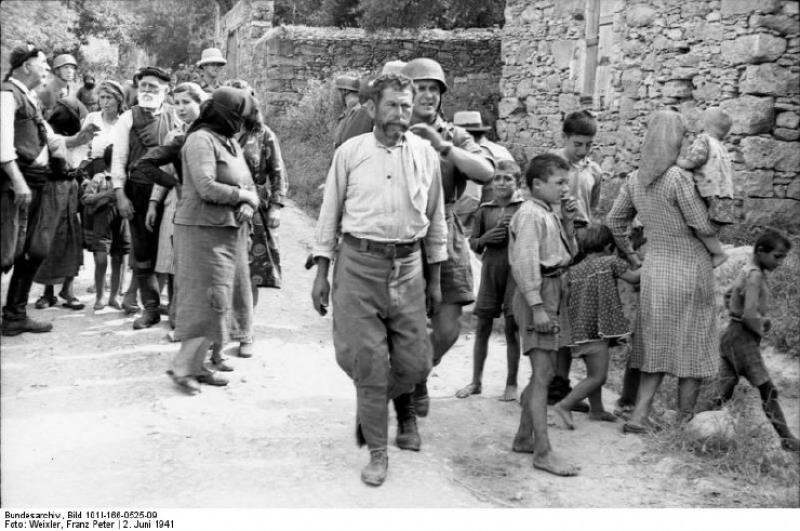
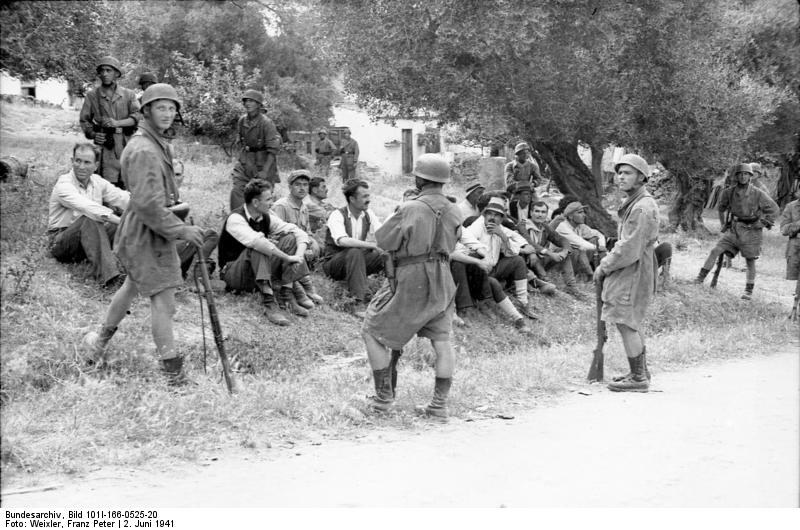
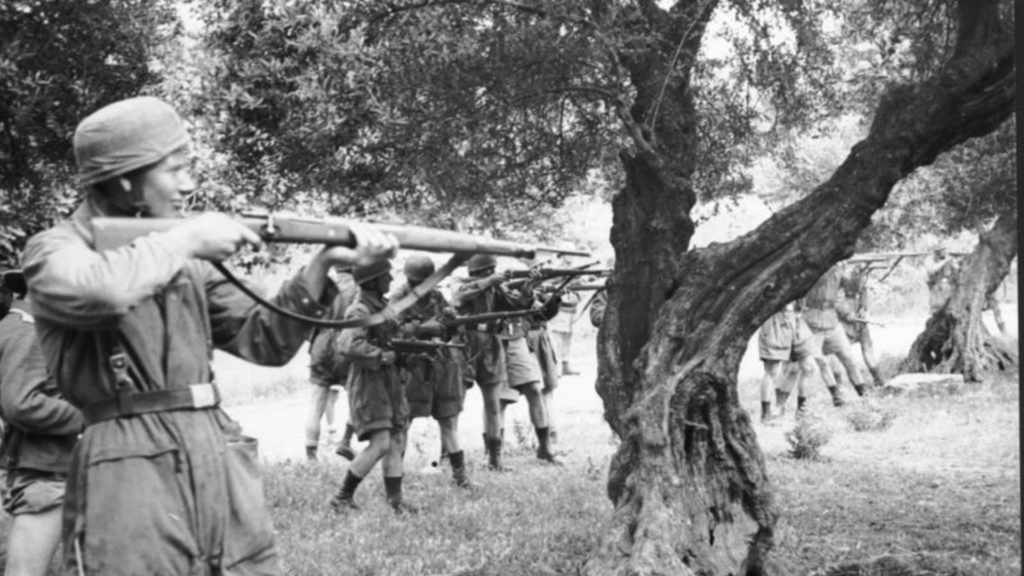
On May 20, 1941, the Cretan guard numbered 42600 men approximately - 28164 of the British Commonwealth and 14000 Greeks. Allied aircrafts were not available in the Battle of Crete, for they had flown to Egypt the previous day. Specifically: The British Commonwealth & Greek forces as well as their respective losses were:
British : Total 15603 ( Dead or prisoners 7704 -Transported to Egypt 7289 )
Australians : Total 6541 ( Dead or prisoners 3332 - Transported to Egypt 3119 )
N.Zealanders : Total 7100 ( Dead or prisoners 2541 - Transported to Egypt 4559 )
Greeks : Total 14000 ( Dead or prisoners 592 - transported to Egypt )

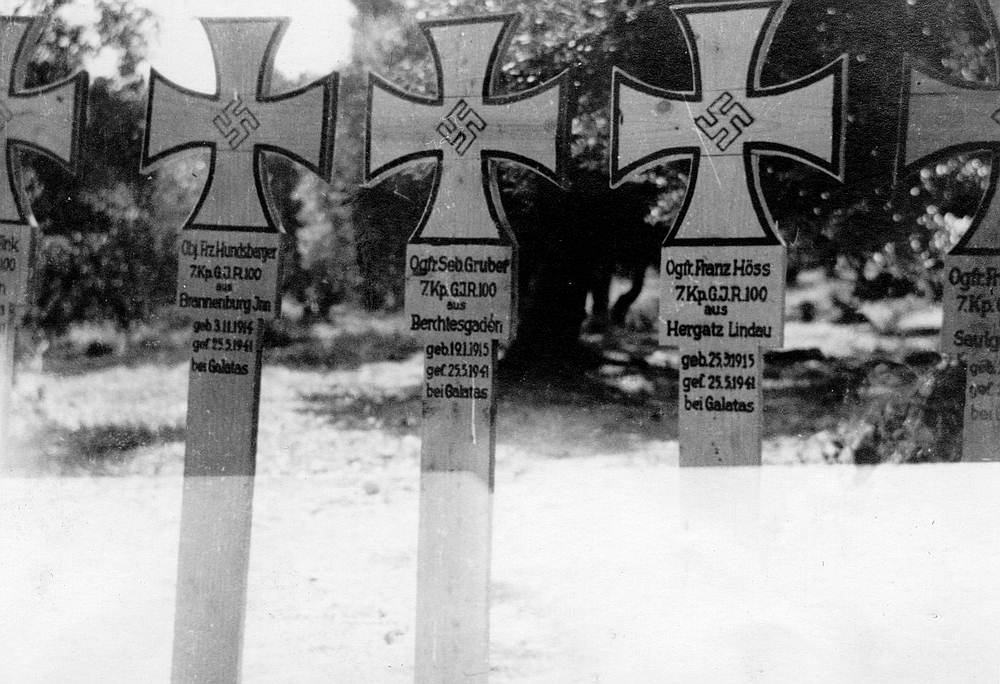
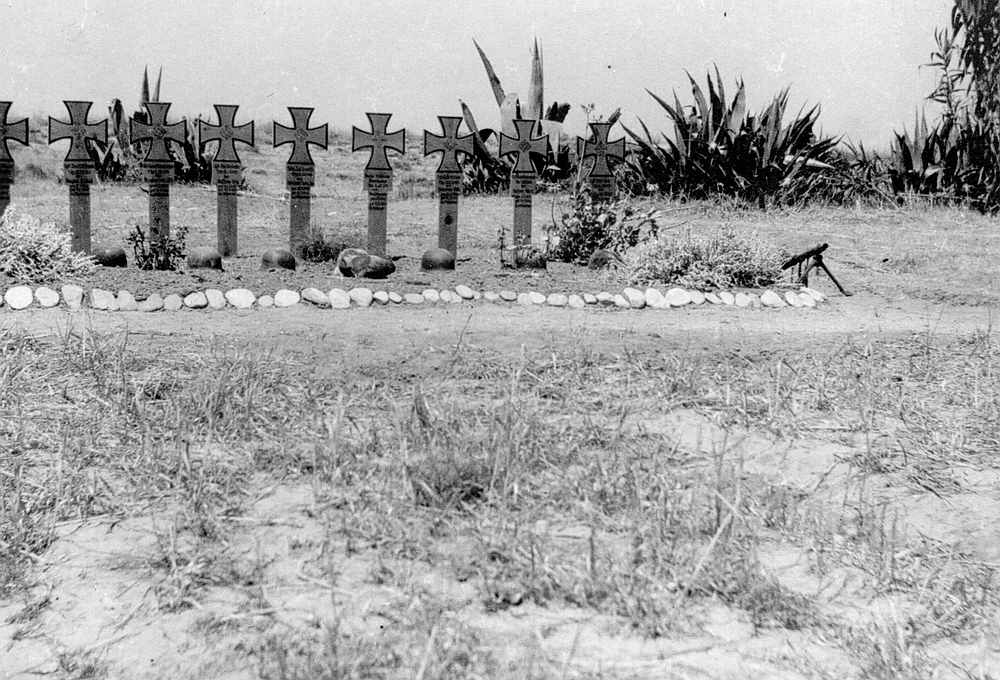
The number of Cretans who died on the battlefields or who were captured and shot rose to 8575. We should note at this point the German losses on the third day of the Battle were significantly higher than the total losses they had suffered in all war fronts. The distribution of forces per defense sector are the following:
14822 at Chania - Souda area, 11859 men in Maleme, 6100 at Rethymnon and 8000 at Heraklion.
Hitler reinforced paratroopers with a Division of Alpinists. The total of German forces was approximately 23000 Men. Their losses were estimated to 5500 men, 4685 of which were buried at Maleme Cemetery. This is a testimony to the dramatic epilogue of the German operation. The dead of the allied forces are buried at the cemetery of Souda.
The British Commonwealth fleet in the Mediterranean numbered 54 war vessels, 11 of which were sunk and 22 suffered severe damages. The air crafts of Luftwaffe which took part in the Battle of Crete were 1180, 147 of which were shot down and 73 crushes landed.
The Germans resented the fortitude and fierce resistance of the Cretans. So, after the fall of the island, began a period of brutal reprisals and more bloodshed. Concentration camps, mass executions, village arson and indiscriminate murders complete the devastating effect of bombardments. The number of victims increased, as unsuspected civilians found themselves within mined areas on Crete.
The Cretans bear a glorious inheritance a deep faith in freedom and independence, which forged their will to resist. The Mt. range of Madares at Chania, Mt. Psiloritis, and the Lasithiotica mountains hosted resistance units that inflicted severe casualties to the enemy who, many a time, was forced to a standstill. Among the great achievements of the resistance was the abduction of General Kreipe near the Spilia area of Heraklion in August 1944.
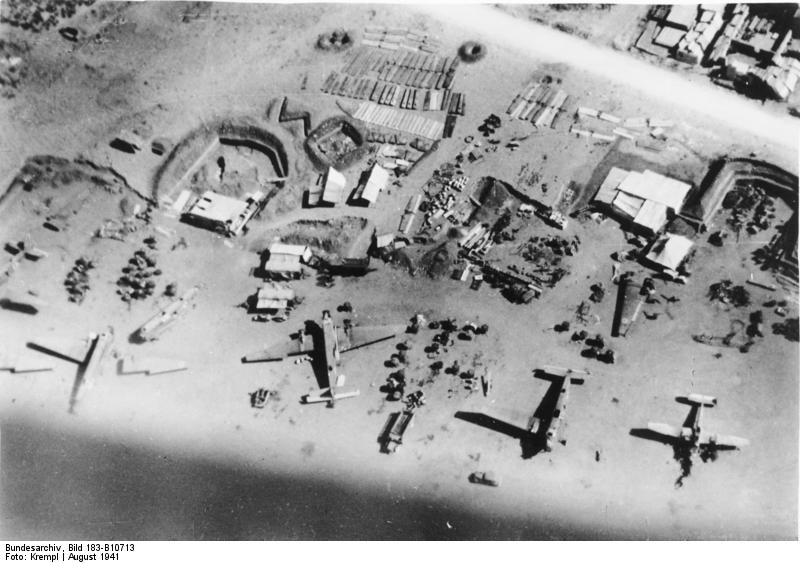
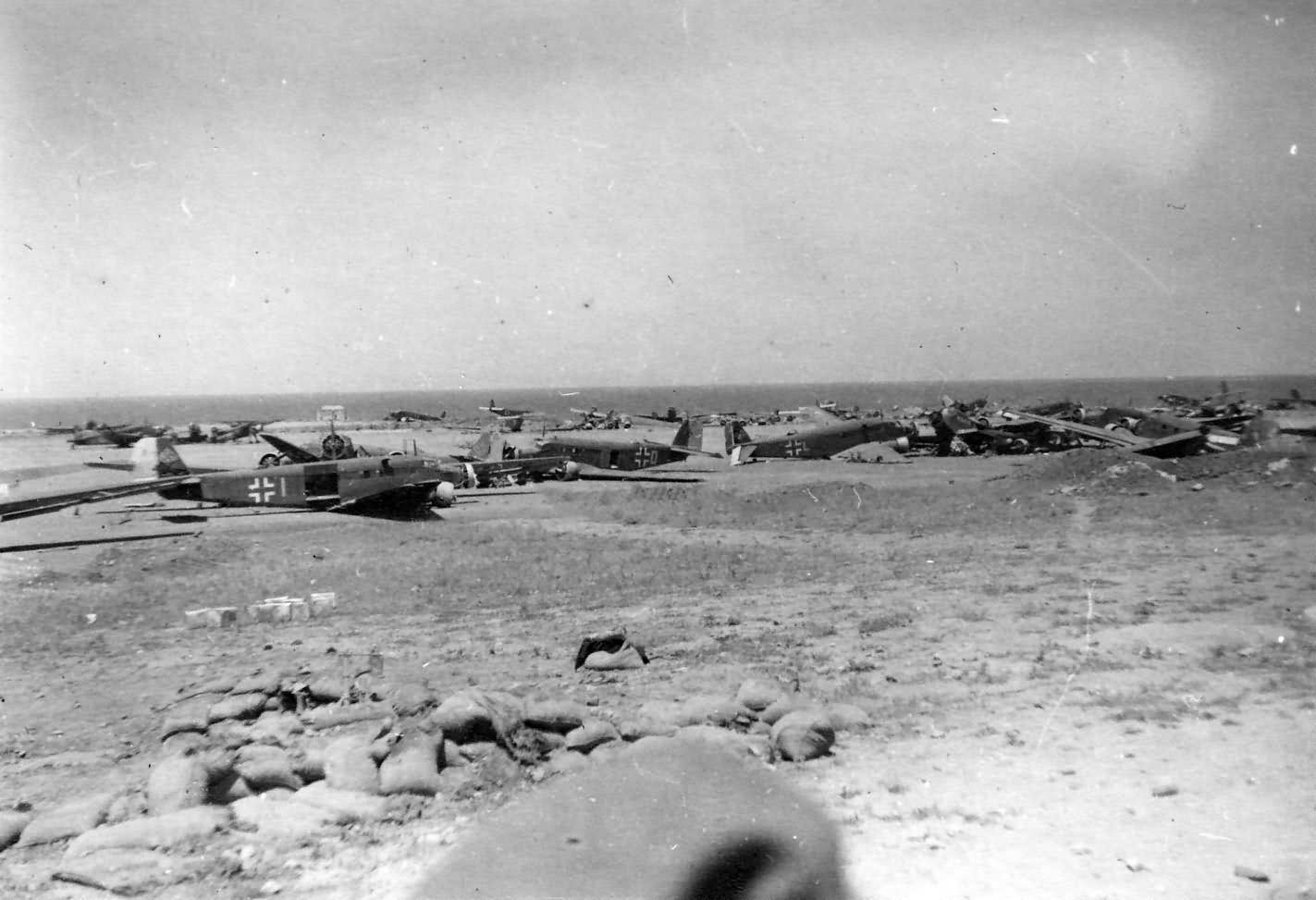
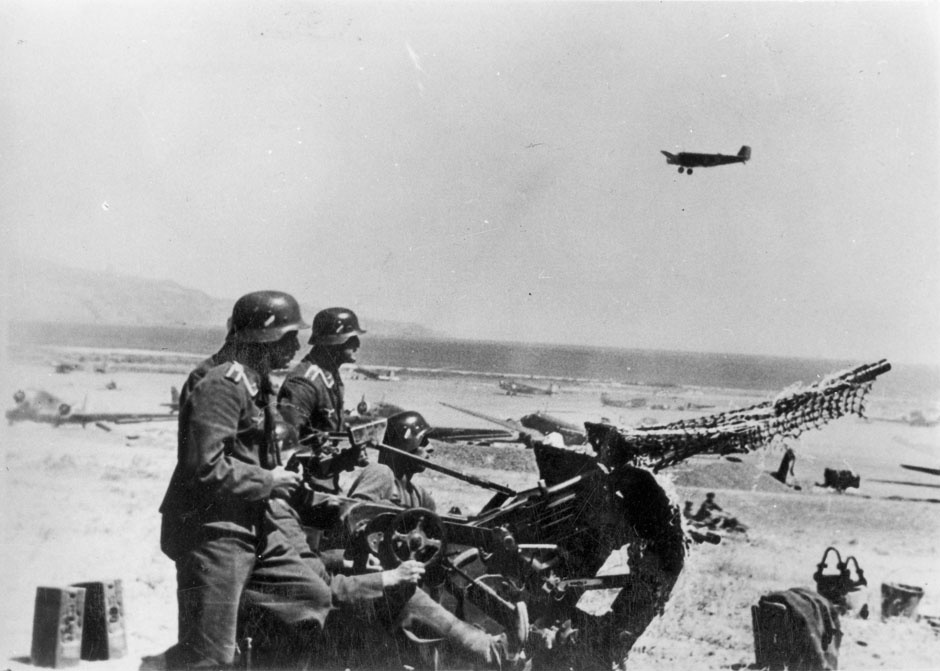
Biography: George I, Panagiotakis
We Will , Remember Them ...
84th Commemoration - Anniversary of the Battle of Crete
The Official Programme for 2025 is :
Tuesday, 20 May 2025
11:30 – Sfakia - Commemorative service and wreath-laying at the Memorial to the Fallen Inhabitants
Location: Battle of Crete monument in Chora Sfakion
18:00 – RAF Maleme -Small Ceremony Service organized by the 33 Sqn , and Gaz Ridge
19:00 – Kissamos -Commemorative service and wreath-laying at the Monument of the Fallen in Kissamos
Location : Kallergiana
Wednesday , 21 May 2025
11:00 – Agia- Golgothas monument
Thursday, 22 May 2025
12:00 – Kolimbari - Commemorative service and wreath-laying at the 5th Cretan Division - Army Cadets Memorial
Location: Kolimbari, Region of Chania
18:30– Nea Chora - Commemorative service and wreath-laying at the Memorial to the Fallen Inhabitants
Location: 1, Kanari Coast, Nea Chora harbor, Chania town
Friday, 23 May 2025
11.00 – Firka Fortress – Official flag hoisting
Location: Harbour, Chania town
13:30 –42nd Street ANZAC -Commemorative service and wreath-laying at the Battle of 42nd Street Memorial ( ANZAC )
Location: Tsikalaria Str., in Souda Area
18:30 – Galatas - Commemorative service and wreath-laying at the Greek-New Zealand Memorial in Galatas
Location: Galatas Square, Galatas, Region of Chania
Saturday, 24 May 2025
11:00 – RAF Memorial Maleme -
10:00 – Alikianos - Commemorative service and wreath-laying at the Keritis Memorial
Location: Municipality of Platanias-Alikianos, Region of Chania
14:00 – Galatas - Wreath-laying by the UK Crete Veterans & Friends at the Greek-New Zealand Memorial in Galatas
17:00 – Souda Bay - CWGC - Commemorative service and wreath-laying at the Commonwealth War Graves Commission Cemetery in Souda - Red Arrows Display
Location: Allied War Cemetery - Souda Bay, Region of Chania
Sunday, 25 May 2025
11:00 – Chania Metropolitan Church - Official doxology
Location: Cathedral Church, Chania town
11:30 – Old Harbour Chania - Flag Parade of the Traditional Associations of Chania.
13:30 – German Cemetery Maleme - Commemorative service and wreath-laying at the German War Graves Cemetery
Location: Maleme, Region of Chania
18:30 – Maleme Airport - Closing Ceremony: Commemorative service and wreath-laying at the Battle of Crete Memorial at Maleme Airport
Location: Maleme, Region of Chania
The latest update of the Program is 12/05/2025 . When we have any official updates, we will update the page.